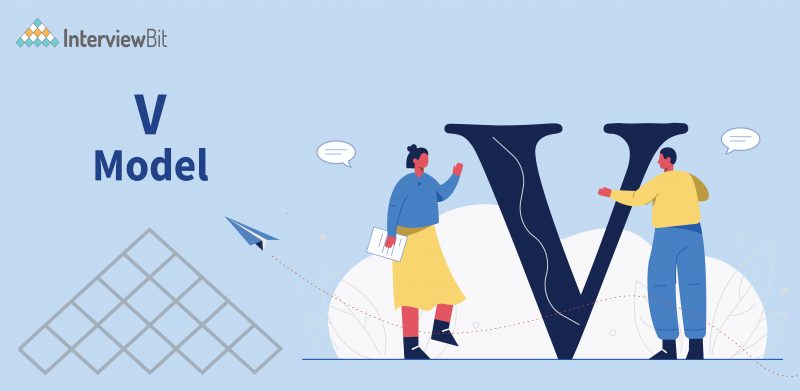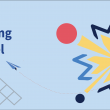What is a V-Model?
The V-model of the SDLC model is interaction executed consecutively in a V-shape. The model is famously known as the Verification and Validation model.
In the V-model the phases are completed one by one before the start of the next phase. In this, the testing phase has a direct relationship with the development procedure.
The following stage begins solely after the finish of the end-stage. For example, in every improvement movement, there is a trying action relating to it.
Confused about your next job?
The V-Model is an augmentation of the waterfall model in which testing is done on each stage corresponding with advancement in a consecutive manner.
What is SDLC, STLC & Waterfall Model?
SDLC: SDLC is Software Development Life Cycle. It is the arrangement of exercises completed by Developers to plan and foster great programming.
STLC: STLC is Software Testing Life Cycle. It comprises a progression of exercises done by Testers systemically to test your product item.
Waterfall Model: Cascade model is a consecutive model partitioned into various periods of programming advancement action. Each stage of this model is intended for playing out the particular movement.
Testing work in the cascade model begins solely after the execution of the framework has ended. Both V-Model and Waterfall are the most broadly rehearsed kind of advancement approach in the product business. The two models are used for better following and efficiently have application advancement.
V-Model Design
The left half of the model is Software Development Life Cycle – SDLC
The right half of the model is Software Test Life Cycle – STLC
The whole figure resembles a V, subsequently the name V-Model.
Under the V-Model in software development, the testing period of the advancement stage is arranged equally. There are Verification stages on one side of the ‘V’ and Validation stages on the opposite side. The Coding Phase of this acts as a layer of glue and intersection that joins the two different sides of the V-Model.
Phases of V-Model
The V-Model’s two branches (Verification and Validation) in SDLC have numerous phases. Further, we will know about the branches and the Phases of the V-Model used in software development.
Verification
It includes a static examination technique (audit) managed without executing code. Verification is the path for the item advancement interaction to observe whether indicated necessities meet.
Validation
It includes dynamic examination technique (utilitarian, non-practical), testing is finished by executing code. Finally, approval is the cycle to characterize the product after the consummation of the advancement interaction to decide if the product meets the client’s assumptions and prerequisites. So V-Model contains Verification stages on one side of the Validation stages on the opposite side. The confirmation and Validation process is joined by coding gradually works in V-shape. In this manner, it is called the V-Model.
The multiple Verification Phases of the V-model are discussed below:
- Business Requirement examination:
It is the initial step where the requirements are comprehended from the client’s or customer’s side. This stage contains an open conversation and understanding regarding the client’s assumptions and definite requirements about the product.
Business Requirement is a vital component of the model and should be handled with care. Unfortunately, a large portion of the clients can’t say much about what they need or require in the product. Thus, it makes the situation worse and negligible.
In this stage, framework engineers investigate and decipher the matter of the proposed framework by concentrating on the client’s requirement list.
Once you have clear and detailed product requirements, it is time to design the complete system. Doing this early stage leaves more time for the actual test execution later.
A beforehand system plan is developed for the system design. In system designing, we take care of the hardware requirements and possible ways of communication for the developing product.
- Architecture Design
The architectural requirements are addressed and designed in this phase of the model. The pattern in choosing the design is that it ought to see all which commonly comprises of the rundown of modules, brief usefulness of every module. Their connection point connections, conditions, data set tables, engineering charts, innovation detail, and so on, the combination testing model is completed in this particular stage.
These system designs are divided into modules with unique functionalities, commonly referred to as High-Level Design (HLD). The information move and correspondence between the inner modules and the rest of the world (different frameworks) are perceived and characterized in this stage.
With the available information in this stage, the integration tests can also be designed.
- Module Design
In this phase, the specific internal design of the various system module is specified, often referred to as Low-Level Design (LLD).
The design should be compatible with internal system modules as well as frameworks present outside the architecture.
In the module configuration stage, the framework separates into small modules. Then, the module’s point-by-point plan is indicated, known as Low-Level Design.
- Coding Phase
After planning, the coding phase begins. Given the necessity of the product, an appropriate programming language is chosen beforehand.
There are a few rules and guidelines for coding. Before checking into the repository, the end form is advanced for better execution, and the code goes through many codes audits for best performance.
There are the different periods of the Validation Phase of the V-model:
- Unit Testing
Unit Test Plans (UTPs) are created in the V-model in SDLC during the module configuration stage. UTPs’ main task is to dispense the blunders present at code level or unit level.
A unit is the littlest element that can freely exist, e.g., a program module. Unit testing finds bare minimum issues and errors when confined from the other codes/units.
- Integration Testing
After fulfillment of unit testing, the task of Integration testing is performed. Finally, in combination testing, the modules are coordinated in the framework. In the V-model, thus testing is concluded in the Architectural Design Phase.
These tests check that gatherings made and tried freely can coincide and convey among themselves.
- System Testing
Unlike Unit Testing and Integration Test Plans, System Tests Plans are priorly composed of a client’s business team.
This testing is done during the System Design Phase in the V-Model testing. Framework Test guarantees that assumptions from an application engineer are full-filled.
- Acceptance Testing
Acceptance testing is in connection with the business necessity investigation part. It remembers testing the product item for client climate.
Acceptance tests uncover the various frameworks problems and issues. These multiple issues are visible and accessible inside the client environment. Moreover, it conjointly finds the non-utilitarian issues like burden and execution deserts inside the genuine client climate.
V-Model in SDLC ─ Application
V-Model application is practically equivalent to the cascade model, as both the models are of a consecutive kind. The requirement must be cleared before the task begins since there is a return cost. This model is utilized in the clinical advancement field, as it is a trained space.
The accompanying pointers are the most concerning situations to utilize the V-Model application.
- The requirements are properly filed, distinct, and fixed.
- Item definition is steady.
- Innovation is not dynamic and is well known by the working task group.
- There are no vague or unique requirements.
Features of V-Model: The various points discussed below are the reasons why the V-model is so successful. These characteristics help us to understand the v model is preferred over other models.
Enormous to Small: In V-Model, testing is done in a progressive viewpoint, For instance, prerequisites recognized by the undertaking group, make High-Level Design, and Detailed Design periods of the venture.
Information/Process Integrity: This rule expresses that the effective plan of any task requires the fuse and union of the two information and cycles.
Scalability: This standard expresses that the V-Model idea has the feature of adapting with any IT project without considering its size, intricacy, or span. This means that the application can be highly flexible which is good for the user. Unmistakable Documentation: This rule expresses that each undertaking needs to make a report. This documentation is required and applied by both the venture improvement group and the help group. In addition, documentation is used to keep up with the application once it is accessible in a creative climate.
V-Model – Advantages & Disadvantges
The positive of the V-Model strategy is that it is very straightforward for use. The effortlessness of this model likewise makes it simpler to apply. The negative is that the model isn’t adaptable to changes, which is necessary in the present powerful world.
The upsides of the V-Model strategy are as per the following −
- It is an exceptionally focused model.
- Functions admirably for small projects where the requirements are informed clearly and beforehand.
- Pretty straightforward model easy to use.
- Simple to oversee as we can track the progress swiftly and appropriately.
- Saves time as it is high chances of success as compared to the waterfall model.
The hindrances of the V-Model strategy are as the following −
- Not a decent model for complex and article arranged ventures.
- Helpless model for long-run ongoing projects.
- When an application is in the testing stage, it is hard to return and change its usefulness.
- Iteration of the phases is not supported in this model.
Conclusion
We can affirmatively say that the V-Model is good for use for projects with fewer complexities, fewer upgrades, and short in size.
It is not difficult to oversee because of the unbending nature of the model. Each period of V-Model has explicit expectations and an audit interaction. Proactive imperfection following – that is, absconds are found at the beginning phase.
The development model chosen for an undertaking relies upon the objectives of that particular project –
- Testing is not independent action, and it needs to adjust the advancement model picked for the work.
- In any model, testing ought to be performed at all levels, for example, right from necessities until support is provided.
FAQs
Q. What is the V-model used for?
A. The V-Model is a framework or model for software development and project management. The V-Model is used to structure the development process, from initial planning and requirements gathering to testing and delivery.
Q. What are the phases of a V-model?
A. The V-model is a commonly used software development process. It consists of several phases, often described as the “V” of the model.
- The first phase is the “visit” phase, in which the client and the development team get to know each other and discuss the requirements for the project.
- The second phase is the “vision” phase, in which the group, often with the help of the client, develops a detailed plan for the project.
Q. What is the V life cycle?
A. The V life cycle is a framework for managing virtual infrastructure, from planning and design to retirement and decommissioning. It’s a model for building, running, and managing a dynamic, high-availability virtual infrastructure that maximizes the benefits of cloud computing while minimizing the risk.
Q. What is the difference between V-Model and agile models?
A. Agile development is a set of principles and practices for software development. Agile methods work in short cycles, respond to change, and develop software in a dynamic environment. The most common Agile method is the V-Model, the Value-Driven Development Model. The V-Model is an incremental development model that applies the agile principles of working in short cycles, responding to change, and developing software in a dynamic environment.







 Join WhatsApp Group
Join WhatsApp Group


